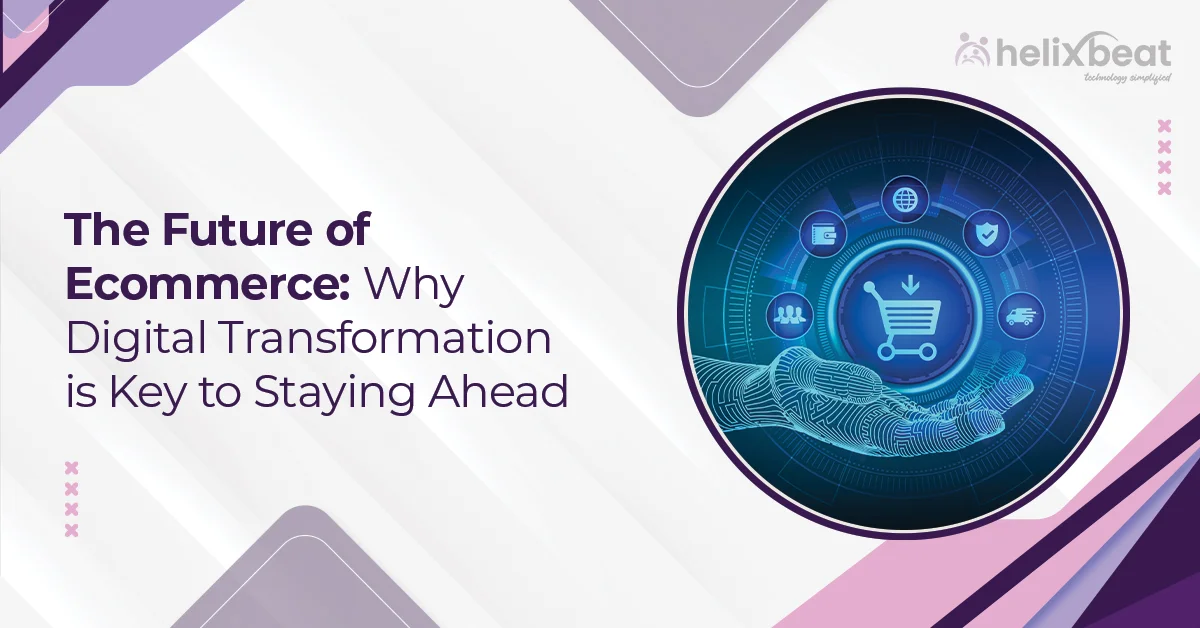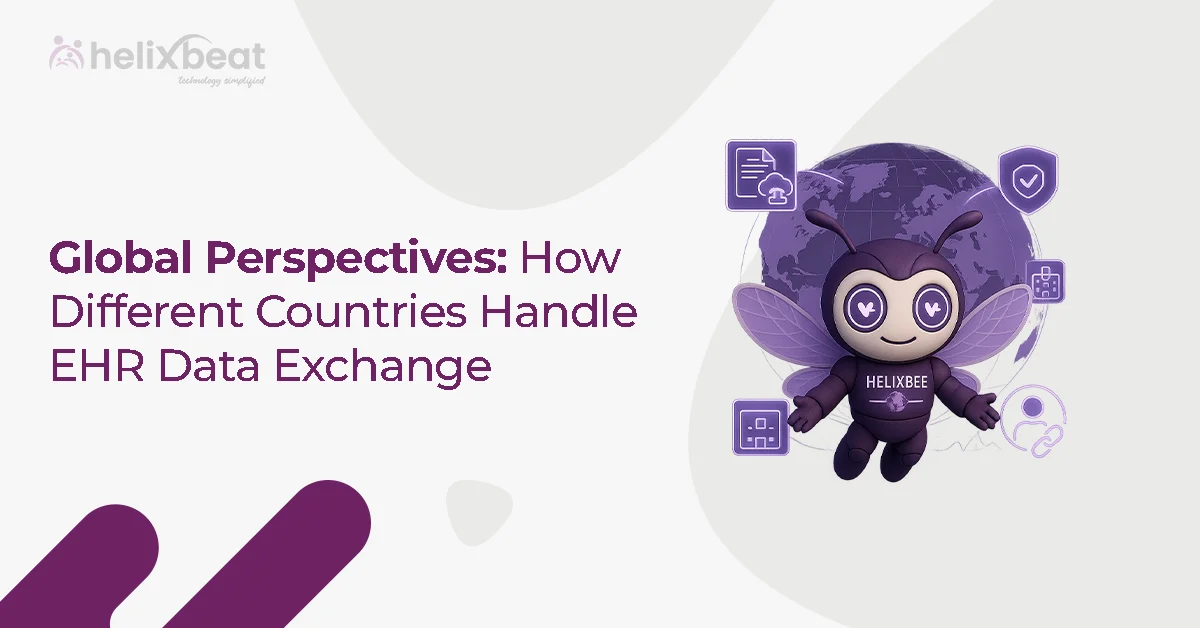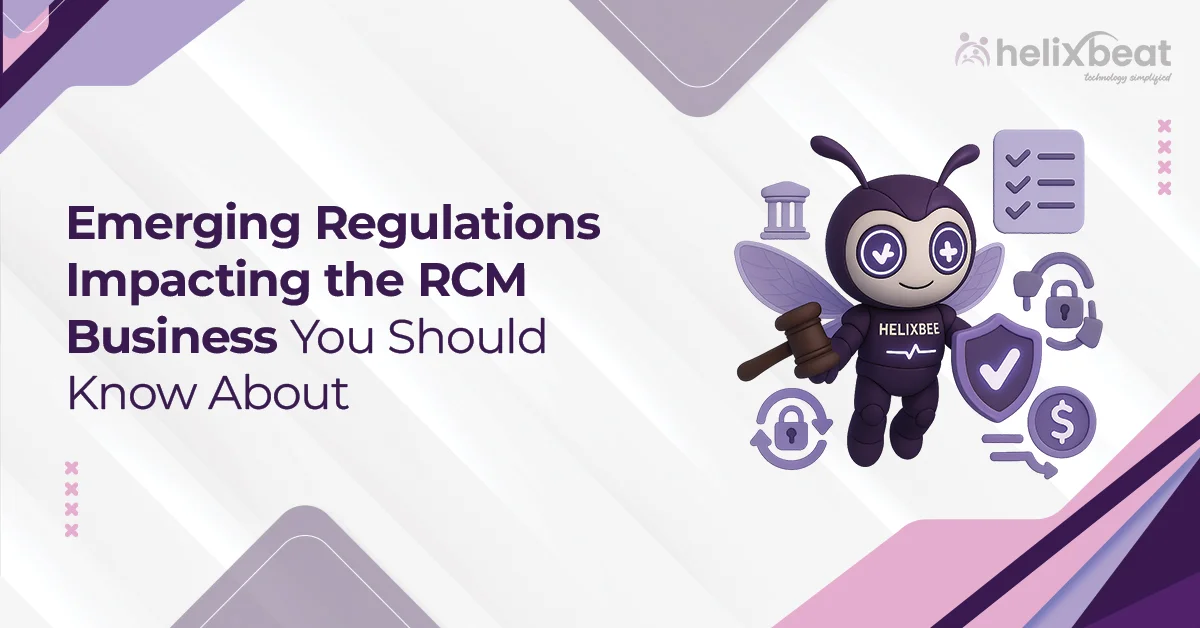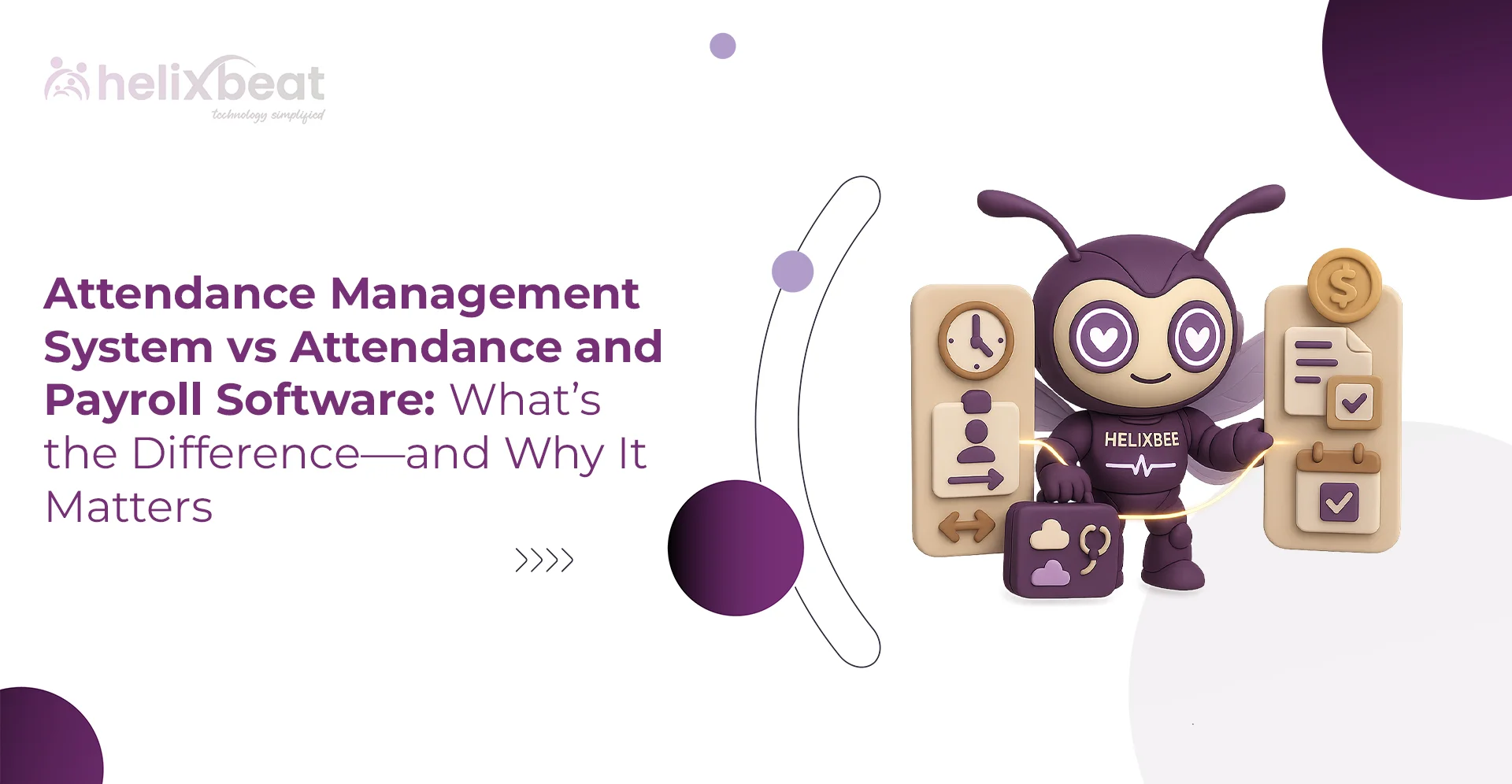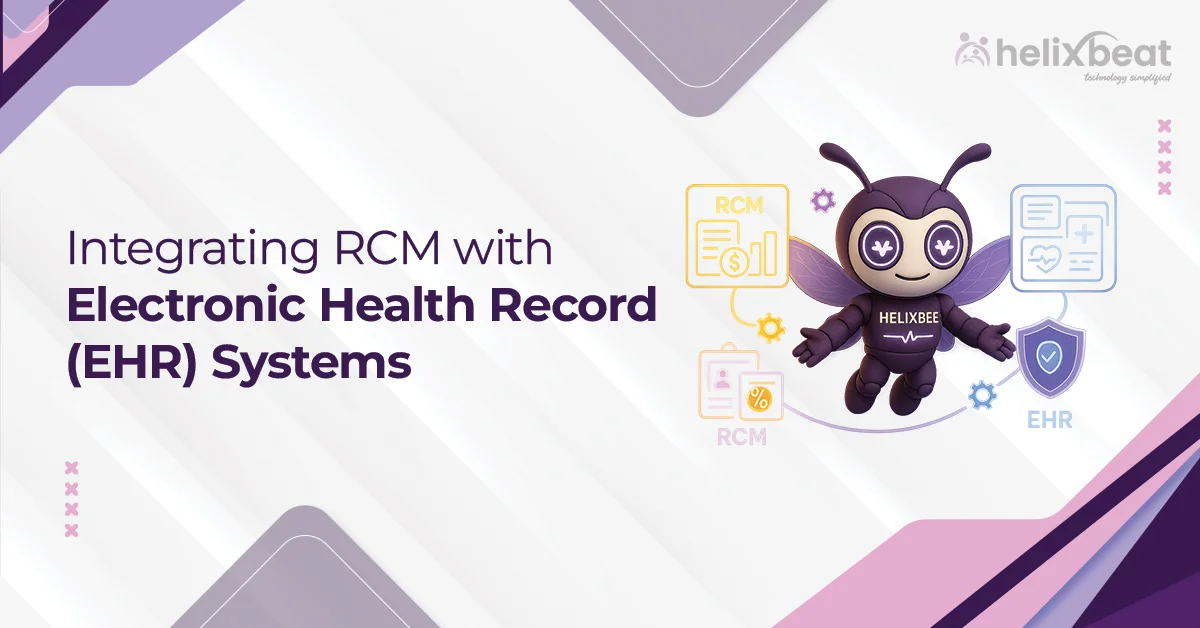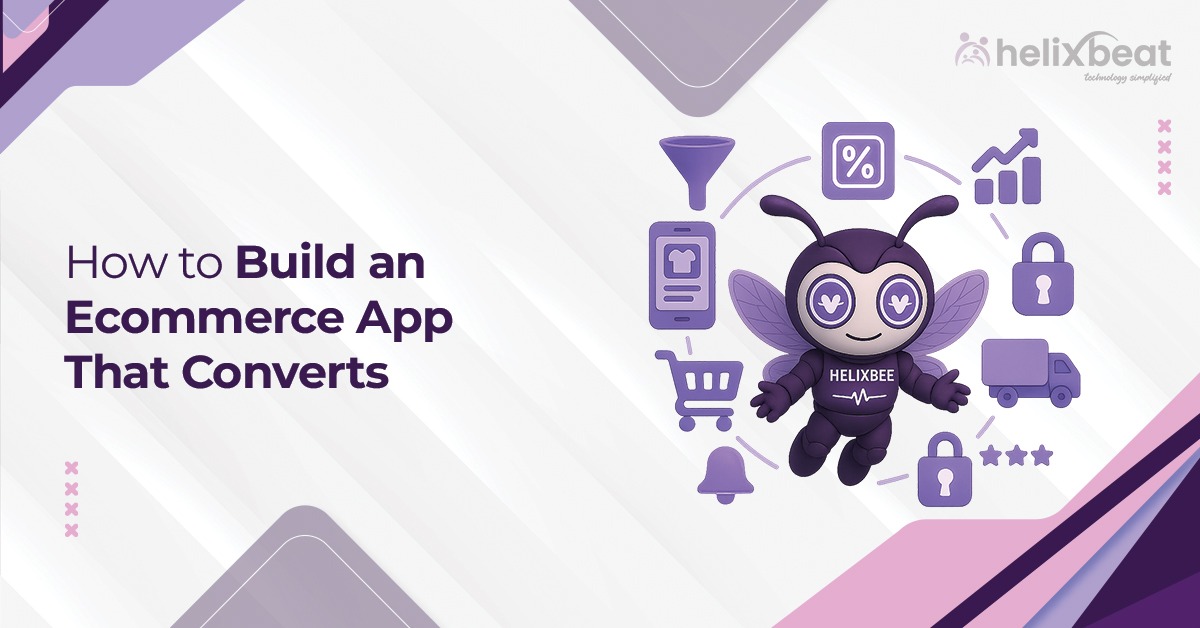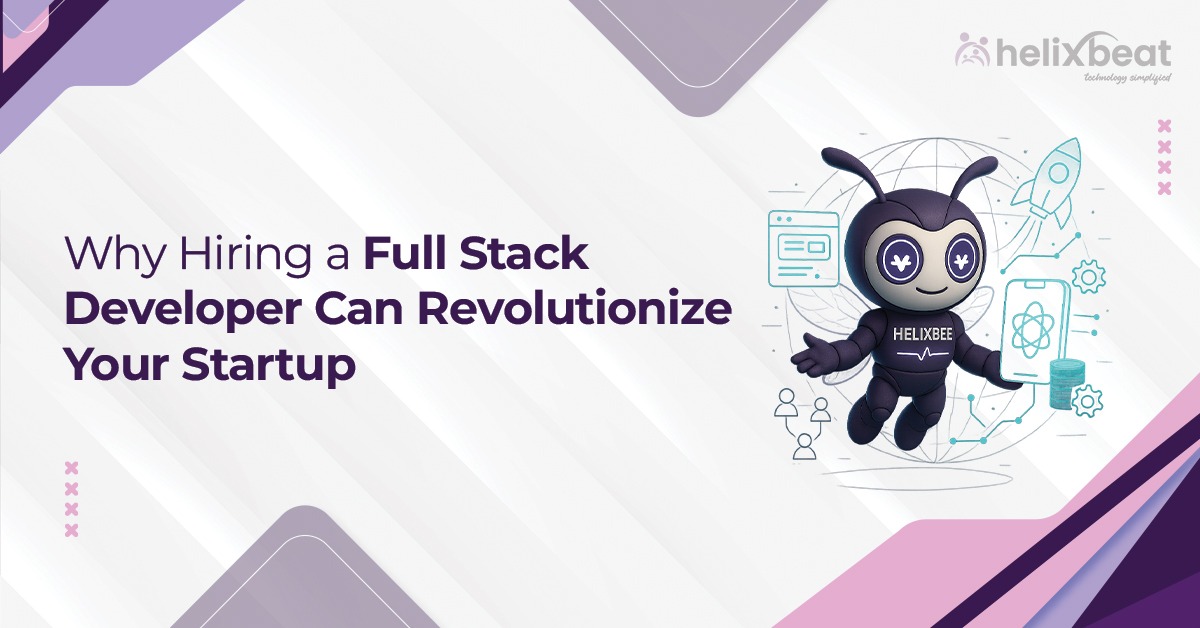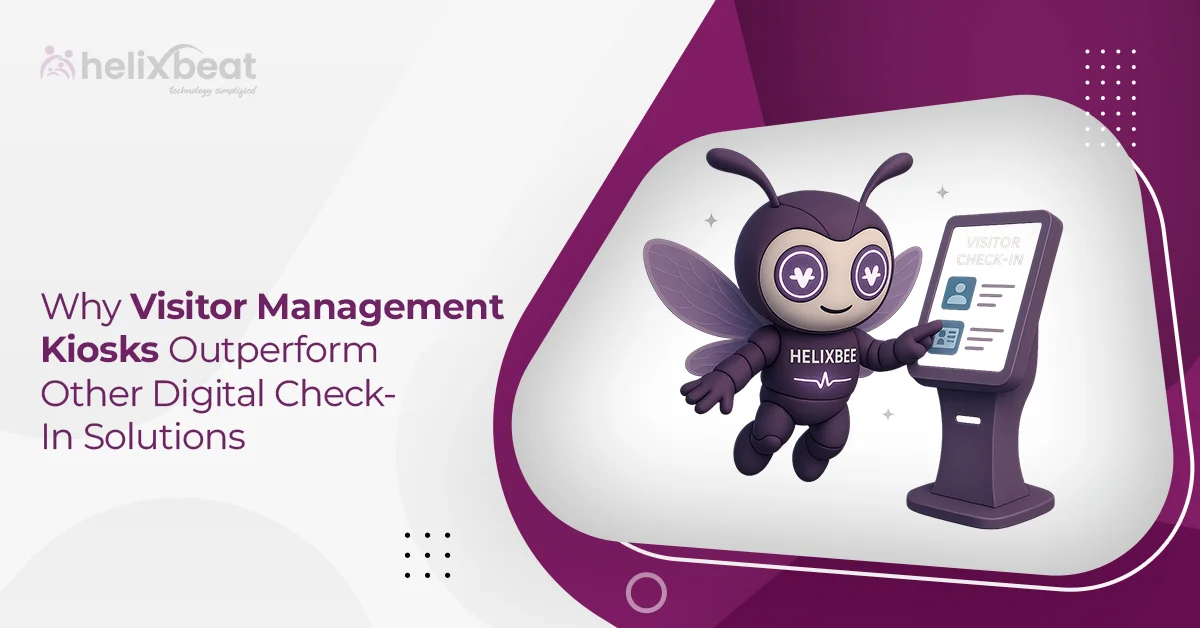We could start this article by quoting stats about ecommerce digital strategy or define digital transformation in ecommerce textbook terms—but let’s be honest, that’s been done a thousand times.
So, let’s tell you a story instead. A real one.
Once Upon a Digital Shift…
Meet Riya.
A few years ago, Riya launched a small business selling handcrafted silver jewelry from Jaipur. She set up shop on a basic website, took orders via Instagram DMs, and managed shipping through WhatsApp and Excel sheets. It was chaotic, but it worked—kind of.
Her brand started gaining traction. Influencers wore her pieces. Orders poured in. But her system? It broke. Website crashes, delayed orders, unhappy customers. The growth she once dreamed of was now overwhelming her.
Then, she discovered Helixbeat.
What followed was not just a revamp—it was a total reinvention. Riya’s ecommerce platform was rebuilt from the ground up with ecommerce digital strategy. AI-powered tools began recommending products based on customer behavior. Inventory, shipping, marketing—all automated. Personalized experiences replaced generic messages.
Six months later, Riya’s sales had doubled, returns dropped by 40%, and her time? Spent designing, not fixing broken spreadsheets.
This is digital transformation in ecommerce. And this is why it matters.
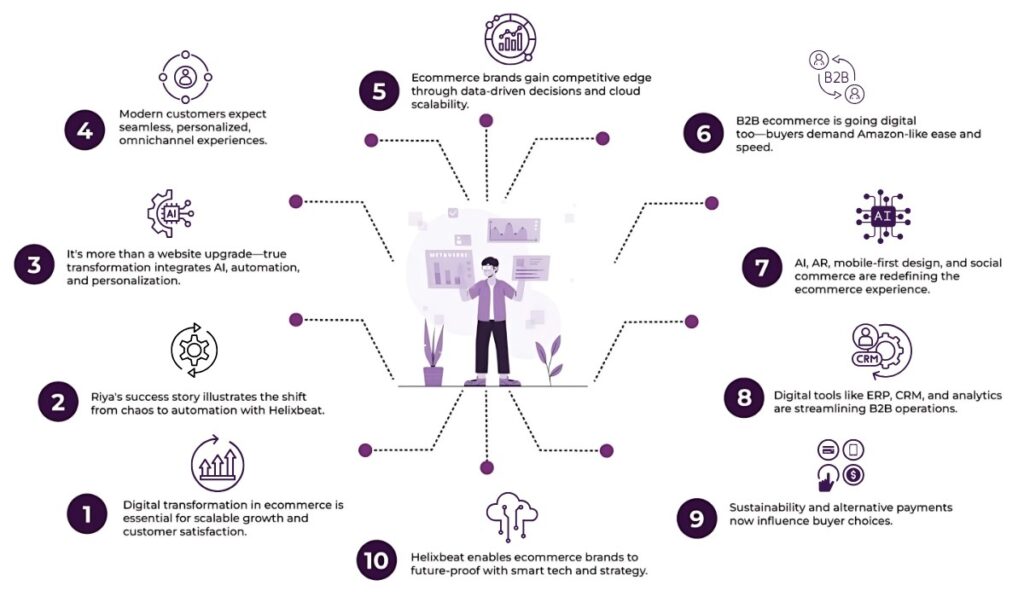
Table of Contents
What is Digital Transformation in Ecommerce?
Digital transformation in ecommerce refers to the integration of digital technologies into all areas of the online retail experience — from backend logistics and inventory to personalized customer journeys and AI-driven decision-making. It’s about rethinking how businesses operate, innovate, and deliver value in a competitive, consumer-driven market.
Unlike a simple website upgrade or app launch, digital transformation in ecommerce is holistic. It involves:
- Automating workflows and processes
- Leveraging data for strategic decisions
- Enhancing user experience through personalization
- Migrating to scalable cloud infrastructure
- Implementing AI and machine learning for smarter operations
Why Ecommerce Businesses Can’t Afford to Ignore It
Let’s face it: consumer behavior has changed forever. Shoppers want lightning-fast checkouts, personalized product suggestions, real-time support, and instant updates.
And if you can’t deliver that?
They’ll move on to someone who can.
Here’s what digital transformation in ecommerce unlocks for ecommerce brands:
1. Shoppers Are Already Online
Today’s customers are research-driven and digitally savvy. A whopping 87% of shoppers scour the internet for product info and reviews—even when they plan to buy in-store. If your ecommerce business isn’t offering easily accessible, updated content online (think product pages, FAQs, social proof), you’re leaving money on the table.
Customers don’t just want to find you online. They expect to.
2. Customer Expectations Are Sky-High
We live in the age of hyper-personalization. Shoppers want seamless, omnichannel experiences—they expect their cart to follow them from desktop to mobile to in-app, and they want to pick up where they left off.
If you’re not creating fluid, connected customer experiences with personalized recommendations, real-time customer support, and fast checkout options, your competitors probably are.
3. A Strong Online Presence Builds Brand Value
More businesses are ditching wholesale strategies and selling direct-to-consumer. Why? Because it lets them control the brand experience, build loyal communities, and increase profit margins.
But D2C doesn’t work without a solid digital footprint. Your website, content, and social channels are your storefront. Think of them as your 24/7 sales reps, ready to impress visitors anytime, anywhere.
Why is B2B eCommerce Shifting to a Digital-First Approach?
Let’s not forget our B2B counterparts. You might think digital transformation in ecommerce is only a B2C game—but that’s old thinking. The B2B world is going digital, fast, and here’s what’s fueling the shift:
1. Digitalization Isn’t a Trend — It’s Survival
Gone are the days of endless email chains, manual order processing, and snail-paced invoicing. B2B buyers now expect Amazon-like efficiency. Ecommerce platform transformation has revolutionized how B2B transactions are handled.
Modern ecommerce platforms streamline the entire process—from product browsing to ordering to payment—on a single, integrated platform. The result? Faster transactions, lower operational costs, and broader reach across regions. By embracing ecommerce platform transformation, businesses can not only meet the demands of today’s buyers but also stay ahead in an increasingly competitive market
2. B2B Buyers Now Expect B2C-Level Convenience
Today’s B2B buyers are millennials and Gen Z decision-makers. They’ve grown up with instant access and digital convenience. So guess what they want when making a business purchase?
- Clear pricing, no negotiations.
- Instant checkout.
- Personalized dashboards.
- Real-time order tracking.
They don’t want a sales rep; they want a self-serve experience with the option to chat if needed. If your business doesn’t offer it, another one will.
3. Tech Is Revolutionizing B2B Operations
Digital tools are turning traditional B2B pain points into smooth, automated workflows:
- Order & Payment Automation: No more manual invoicing or follow-ups.
- ERP & CRM Integration: One dashboard for everything—customer profiles, inventory, sales.
- AI & Analytics: Smart product suggestions, demand forecasting, customer segmentation.
- Cloud Platforms: Work from anywhere, access everything in real time.
With these tools, B2B ecommerce digital strategy becomes not just scalable—but also agile and insight-driven
How Digital Transformation Will Shape the Future of E-commerce
1. Direct-to-Consumer (DTC) Models are Booming
Digital transformation in ecommerce empowers brands to sell directly to customers, cutting out the middleman. This DTC model allows businesses to collect first-party data, personalize experiences, and build loyal communities. For example, Larq’s crowdfunding success story proved how direct engagement with users leads to meaningful connections and stronger branding.
HelixBeat simplifies DTC selling by enabling sellers to customize brand pages, communicate with buyers directly, and use built-in analytics to track customer behavior.
2. Augmented Reality (AR) is Changing the Game
By 2025, 50% of e-commerce retailers are expected to use AR to help customers preview products in real-life settings. Whether it’s trying on glasses virtually or placing furniture in your room via smartphone, AR reduces guesswork and return rates.
HelixBeat is integrating AR experiences into its platform to make online shopping more interactive, helping users “try before they buy” from the comfort of their homes.
3. Mobile Commerce is Becoming the Norm
Smartphones are now the shopping mall in everyone’s pocket. By 2025, 72.9% of all e-commerce sales will come from mobile devices .
HelixBeat’s mobile-first architecture ensures that buyers and sellers experience lightning-fast browsing, smooth checkouts, and in-app chat support — all optimized for mobile users.
4. AI-Powered Personalisation is a Must
Artificial Intelligence is changing how brands interact with customers. From smart product recommendations to automated support and dynamic pricing, AI in ecommercemakes personalization scalable. By 2025, 84% of AI in e-commerce businesses will rely on AI to power their customer experiences.
HelixBeat leverages AI in ecommerce to recommend products based on past purchases, browsing history, and trending interests — helping users discover more of what they love.
5. Social Commerce and Live Shopping are Exploding
Social media isn’t just for scrolling anymore — it’s for shopping. Social commerce is projected to hit $2 trillion by 2025. Live streams with embedded “Buy Now” buttons and influencer-hosted product showcases are becoming common.
HelixBeat integrates social selling tools that allow sellers to stream live product demos, interact with viewers, and convert them into customers — all in real time.
6. Omnichannel is the New Standard
Shoppers move between platforms and devices — and expect their journey to be seamless. Retailers with a strong omnichannel strategy can see a 20%-30% boost in revenue.
HelixBeat ensures that users have a unified experience across web, mobile, and social touchpoints, from cart to checkout.
7. Alternative Payment Methods are Vital
Buy Now, Pay Later (BNPL), digital wallets, and cryptocurrency are replacing traditional credit card checkouts. Shoppers want flexibility — and offering that boosts conversion rates.
HelixBeat supports a wide range of payment gateways including UPI, PayPal, Google Pay, and BNPL services, making transactions faster and easier for every buyer.
8. Big Data Empowers Smarter Decisions
With big data analytics, companies can monitor user behavior, predict trends, and optimize inventory in real time. Digital transformation in ecommerce turns data into actionable insights.
HelixBeat’s dashboard provides real-time data reports on customer preferences, best-selling products, and campaign performance to help sellers scale smartly.
9. Sustainability is Becoming a Priority
Today’s consumers are eco-conscious. Brands using recyclable packaging, reducing waste, or supporting ethical sourcing are winning customer loyalty.
HelixBeat features a “Green Shop” badge for sellers with eco-friendly practices, encouraging mindful consumption and responsible retailing.
10. B2B E-commerce is Getting Smarter
Digital transformation in ecommerce isn’t just a B2C thing. B2B e-commerce is growing fast, with automated purchasing, bulk order tools, and customized pricing models leading the way.
HelixBeat offers tailored solutions for B2B clients, including private catalogues, quantity-based pricing, and enterprise-level integrations for wholesalers and resellers.
What Does Digital Transformation in ecommerce Actually Look Like?
Let’s get specific. Here are the core pillars where Helixbeat makes transformation happen with ecommerce digital strategy:
1. E-commerce Platform Transformation
Think of your platform as your digital storefront. If it’s clunky or slow, you lose customers before they even browse.
Helixbeat helps businesses migrate from outdated systems to high-performance platforms like Shopify, Magento, and custom builds—making sure your site is fast, mobile-first, and ready to scale.
2. AI in E-commerce digital strategy
From chatbots that handle support to smart algorithms that recommend products, AI in ecommerce isn’t the future—it’s now.
Helixbeat brings AI in ecommerce into your core systems:
- Smart inventory forecasting
- Dynamic pricing
- Real-time personalization
- Visual search tools
You sell smarter. You support faster. You grow quicker.
3. Workflow & Marketing Automation
Manual tasks? Outdated. Helixbeat automates everything from order processing to cart abandonment emails, freeing up your team to focus on innovation—not routine.
4. Cloud Integration & Scalability
Spikes in traffic during festive sales? New markets to enter? No problem. With cloud integration, your systems scale as your brand grows. Helixbeat ensures security, uptime, and speed—all in one.
Conclusion: The Time for Digital Transformation in ecommerce Is Now
Riya’s story highlights the new reality: digital transformation in ecommerce is no longer optional, it’s essential. Whether you’re a creator, a B2C brand, or a B2B giant, adapting to digital change is critical.
Helixbeat is at the heart of this shift, offering AI, AR, real-time analytics, and omnichannel solutions to help businesses thrive. Digital transformation in Ecommerce today isn’t just about selling online—it’s about delivering smarter, faster, personalized experiences.
If your systems are holding you back, it’s time to rethink what’s possible. The future belongs to those who embrace digital transformation in ecommerce. Ready to build your success story with Helixbeat?
FAQs
1. How is digital transformation beneficial for an e-commerce startup?
Digital transformation helps e-commerce startups streamline operations, enhance customer experiences, and scale efficiently. It automates key processes, improves data insights, and allows businesses to offer personalized, seamless experiences, leading to increased sales and customer retention.
2. How do I benefit from digital transformation in eCommerce?
By adopting digital transformation, you can improve operational efficiency, offer personalized shopping experiences, automate tasks, and use AI for smarter decision-making, resulting in better customer engagement, reduced operational costs, and higher conversions.
3. How does personalization impact e-commerce success?
Personalization enhances the shopping experience by recommending products based on customer behavior, improving engagement, increasing conversion rates, and boosting customer loyalty. It builds a tailored experience that makes customers feel valued and understood.
4. Why is digital transformation crucial for e-commerce success?
Digital transformation is crucial because it helps businesses adapt to changing consumer expectations, optimize operations, and remain competitive. It enables seamless, personalized shopping experiences, quick problem-solving, and scalability, all of which are essential for long-term growth in a digital-first world.
5. How can AI and automation improve e-commerce operations?
AI and automation help optimize inventory management, personalize marketing efforts, predict customer behavior, and handle customer service. This reduces manual work, enhances customer experience, and boosts efficiency.
6. What role does cloud integration play in e-commerce digital transformation?
Cloud integration provides scalability, security, and flexibility. It ensures that your platform can handle traffic spikes and market expansions, while offering real-time updates, improving efficiency, and allowing remote access to data.
7. How does mobile commerce impact e-commerce growth?
Mobile commerce allows customers to shop anytime, anywhere, creating a more convenient and accessible shopping experience. With mobile-first platforms, businesses can capture a larger audience and increase sales through optimized mobile browsing and checkout.
8. What does an omnichannel strategy mean for e-commerce businesses?
An omnichannel strategy ensures a seamless customer journey across all touchpoints (web, mobile, in-store, social media). This creates a consistent experience, boosts customer satisfaction, and ultimately leads to higher conversion rates.



